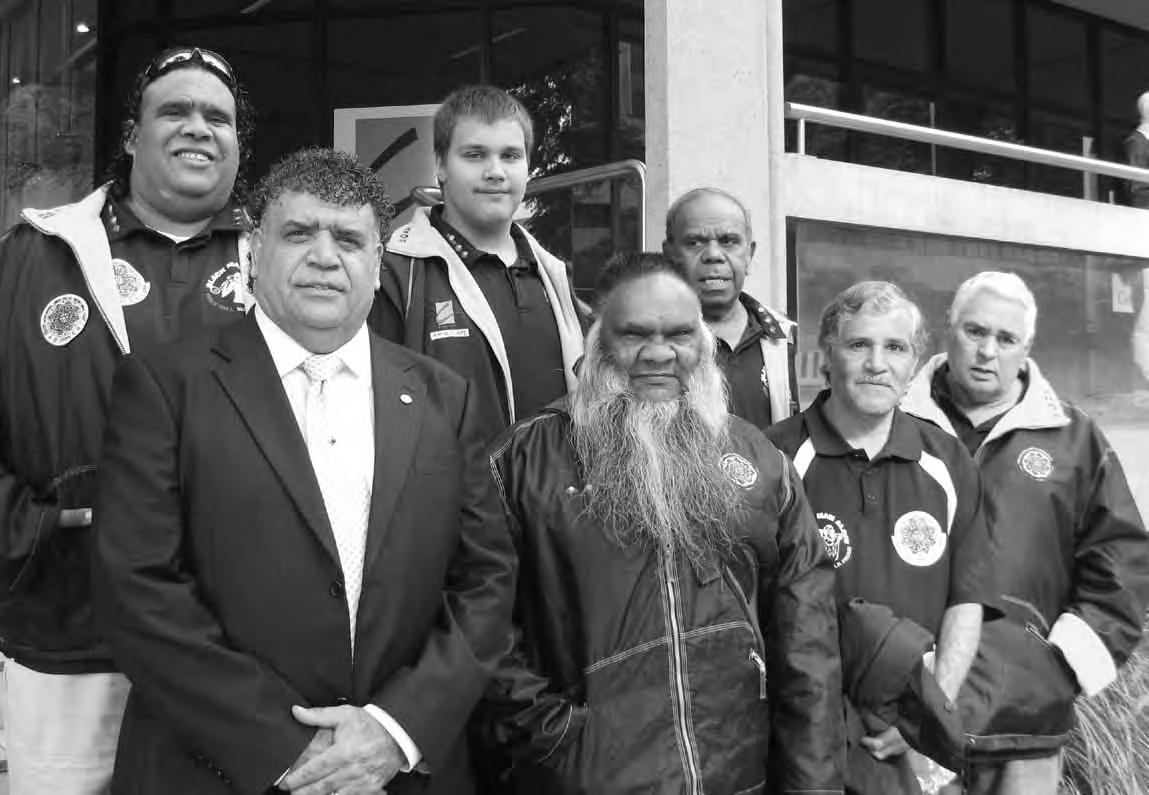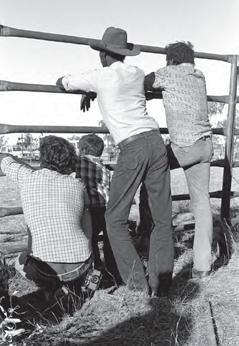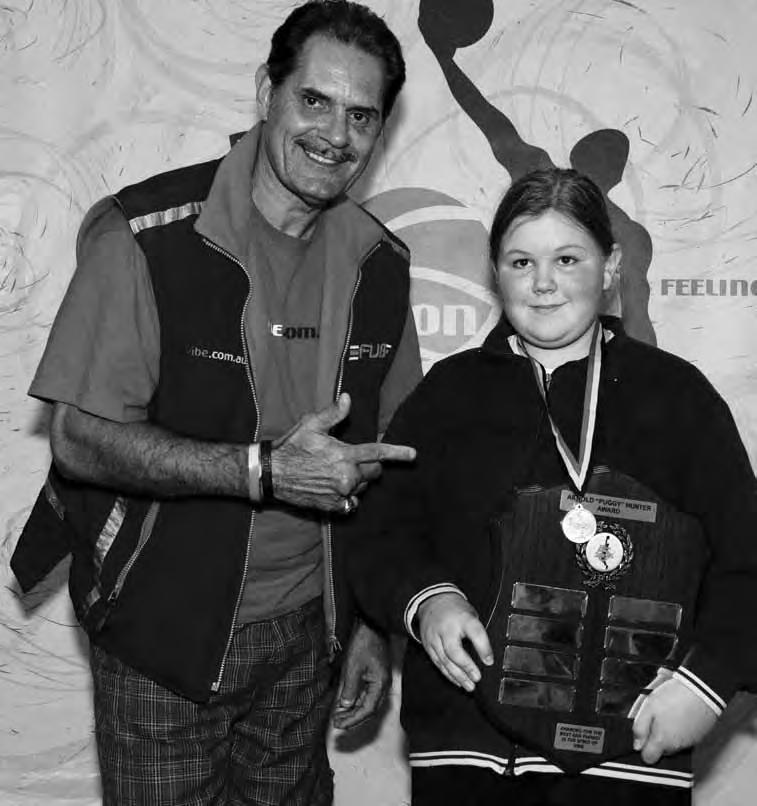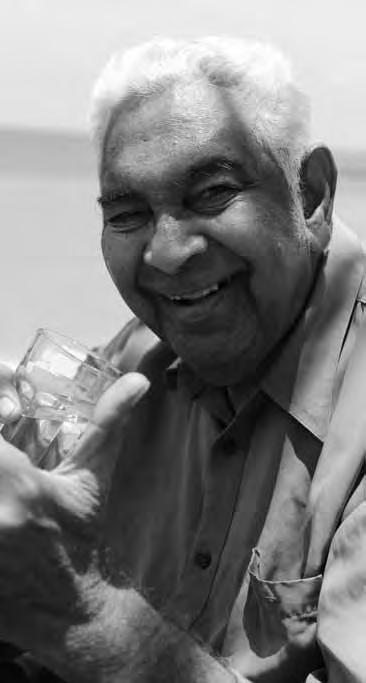
13 minute read
Mari Yerta
As a small corporation, Mari Yerta* Men’s and Young Men’s Aboriginal Corporation is not concerned about office facilities – they don’t have an office.
Instead meetings are held at people’s houses or community centres and their business is mostly carried out from home. ‘Some organisations are stuck in the old way where they think they need a big building,’ says Neville Highfold, one of the founding directors. ‘We’re about empowering people, then other things will come.’
Advertisement
From its origins in 2003, the northeast Adelaide based Mari Yerta has grown from a handful of people to a membership of more than 30 and an active committee of 10 directors.
Along the way they have set up a solid foundation for good governance: developing strategic and business plans, undertaking ORIC training and tailoring their rule book to best meet the key aim of ‘developing a strong voice enhancing community well-being’.
An administrative highlight was the recent lodging of corporate documents, as required under the Corporations (Aboriginal and Torres Strait Islander) Act 2006 (CATSI Act), online.
‘It’s made meeting our obligations a lot easier.’
There has been a number of awards as well, including the City of Port Adelaide Enfield 2007 ‘Organisation of the Year’ and a 2008 ‘Elder of the Year’ honour for Mari Yerta director Greg Sinclair.
Above: Mari Yerta directors Neville Abdullah and Neville Highfold with Youth committee member Desmond Hunt and fellow directors Jeff Hunter, Brian Goldsmith, Peter Gibson and Greg Sinclair.
Today the focus is on forming networks and agreements with business, government and the broader community. ‘The new way forward is to forge partnerships,’ Neville says.
The other priority is to grow successful youth projects including the annual graduation ceremony held in collaboration with the South Australian Department of Education and Children’s Services.
‘We put on a giant community event with elders, families and community people,’ Neville Highfold enthuses. ‘We present them [the students] with a shirt with all their names on, so they’re the class of that year and they get a community certificate that is signed by elders and this is very important. Then there’s a bit of a disco and the kids all celebrate together.’ Started in 2003, six separate graduation ceremonies took place recently at the close of the 2010 school year. Now known as ‘Just too Deadly’, the joyous events acknowledged the achievements of year 7 to year 12 Aboriginal students from the city’s north-east district.
‘I’m hoping to support other communities so they can introduce the program and get started next year,’ Neville says.
There may be no office, but there is certainly a lot of determination, hard work and success for the small corporation.
*Mari Yerta means east country in the Kaurna language.
This story reproduced with thanks to the Office of the Registrar of Indigenous Corporations.
Women hold up half the sky award
Aboriginal women’s advocate, Patricia Waria-Read has won a new award recognising outstanding women.
The award is part of the Australia Day Awards and was presented to Ms WariaRead by the Minister for the Status of Women, Gail Gago at a ceremony at Government House in January. “Patricia has been selected for her dynamic role in advocating for the rights of Aboriginal women, as well as the leadership and inspiration she provides to other women in the community,” said Ms Gago.
“She has been a catalyst for the rights of Aboriginal women on a community, state and national level, ensuring their voices are heard, acknowledge and respected.
“As a teacher and mentor, Aunty Pat has touched the lives of many young Aboriginal women, inspiring them to leadership and helping to create pathways to make it possible.” Chairman of the Australia Day Council of South Australia, Dr Tony Cocchiaro said the Award was established to acknowledge women in the community who have not previously been publicly recognised. “We received over 70 nominations for this new award, well and truly exceeding our expectations and the standard of nominations has been very high,” Dr Cocchiaro said.
The Women Hold Up half the Sky Award has taken its name from a well-known artwork by internationally-recognised South Australian artist, Ann Newmarch, who is herself a recipient of the Order of Australia for services to art.
Patricia Waria-Read is actively involved in the Aboriginal women’s issues as a delegate to the State Aboriginal Women’s Gathering (SAWG) and in her role as Deputy Chair of the National Aboriginal and Torres Strait Islander Women’s Gathering (NATSIWG).
Update on Yankunytjatjara trust
The Yankunytjatjara Native Title Aboriginal Corporation will establish a trust for charitable purposes.
The decision was taken at the Annual General Meeting in Ilinytjitjara in November 2010 where members present confirmed instructions to South Australian Native Title Services to assist in establishing a Yankunytjatjara Trust. A Trust is something that looks after money for someone else. There are a number of benefits of having a trust. For example, it helps to protect money, makes sure decisions are made properly, makes it easier to provide assistance to members, and can have tax benefits.
Now that the community has approved starting a trust, decisions need to be made about the type of trust that is best for the community. In conjunction with the Yankunytjatjara Trust, on instructions from the community, SANTS has also sought professional assistance to help the community make decisions about benefits that were provided in exchange for settling native title. This included making an application to the Commonwealth Department of Education, Employment and Workplace Relations for funding to complete a ‘scoping project’ to assess the type of activities that would be successful in utilising those benefits. Decisions about those benefits are really important and need to carefully weigh up all options. This is because, if a decision is made quickly without proper advice, all of the monetary benefits will be used up, without an income to ensure that YNTAC can continue to operate.


Raparapa, Stories from the Fitzroy River Drovers
A wonderful new book will be released in May 2011, featuring raw and gritty stories of the Aboriginal drovers and stockmen of the Kimberley.
Well it’s not actually a new book; it’s a new edition, updated and revised. The first edition was published in 1988 and was a co-winner in the WA Week Literary Awards and a sell-out.
Raparapa, Stories from the Fitzroy River Drovers, came about from the determination of Senior Nyikina lawman, John Watson, to present an Aboriginal perspective. The result is powerful, personal stories that show how these hard-working men adapted to station life and why they became the backbone of the pastoral industry in northern Western Australia. Their foresight and perseverance has helped generations of Kimberley Indigenous people secure vast tracts of land where they now live with their families, running their own cattle stations. The text is haunting.
This book will open eyes… This book captures the raw reality of the interface of ‘white’ and ‘black’ worlds.
Every page shows the qualities, for good and bad, of communities in the often harsh, yet frequently beautiful, circumstances that threw these people together.
raparapa
Bronco rider, Thomas Skinner, Noonkanbah Rodeo, 1986
78 He got rifle
My father was a bullocky, a kartiya by the name of Jim Shandley. When he first came to Fitzroy he was carting supplies to the stations with a bullock team. When he didn’t have a load he would stop and do some work for the station manager, firstly at Go Go and then at Fossil Downs. He worked for Willie MacDonald, not Bill MacDonald but his old father Willie. And he worked for a few others too. I heard a few stories about him from Dick Fellon, who used to be the owner of the Fitzroy Crossing pub. Dick knew him because he used to drink at the bar in his spare time. Apparently he was a real fighting man. If anyone picked him he wouldn’t just go for one bloke, he’d go for three. He’d take them out on
Jock Shandley

The foreword for the book is written by the Hon. Michael Kirby, AC, CMG. He writes: The photographs, archival and modern, are evocative. Raparapa is retailing at $29.95 and is available in bookshops or online at www.magabala.com
Spectators at the Noonkanbah Rodeo, 1986
79
Waltjim Bat Matilda
Northern Territorian Aboriginal singer/songwriter Allyson Mills has opened concerts for Elton John, Tina Turner, Charlie Pride and Peter Murray.
However it is her highly regarded Great Uncle Valentine Bynoe McGinness, born in 1910, who inspired Ali with his Kriol version of Waltzing Matilda. “What we’ve done is claim a version of white Australian song, and to say – we love it! We want to share with Australia our version of this wonderful song,” said Ali Mills. The song “Waltjim Bat Matilda” is the single from Ali’s debut album of the same name.

“When I first heard Kriol I thought what a great sound, it has a bite and a ring to it that sounds like a part of Australia I can relate to,” said Producer, Michael Hohnen. “I remember the time years ago when there was a lot of debate about our national anthem, and although Waltzing Matilda doesn’t really contain lyrics that inspire reverence or patriotism, it does imbue Australian humour and storytelling, and actually makes me feel like I am in the Australian bush or country. “What a shame our country didn’t throw caution to the wind and take it on! Not everyone will love this song or version, but like a Slim Dusty song it has a novelty factory that is universally appealing,” he said. Other songs on the album worth a listen include Millsie, Dream Serenade and Larrakia Tears.
“I have been sung to sing….I work for Song Dreaming...my dreaming is my pact with nature..whatever goodness I receive, I acknowledge, share and pay tribute to… This is the law of the land.” Ali Mills 2010.
“Waltjim Bat Matilda” is available online at iTunes and is distributed by MGM.
in review
Welcome to our new column in review
which will feature reviews and stories on Aboriginal writers, artists and musicians.
We welcome your feedback and suggestions. So if you know of a new work about to published or an artist or musician please contact us on (08) 8110 2800.
Murray Bridge played host to the National Indigenous 3on3 Basketball and Hip Hop Challenge – the Vibe 3on3 on April 14.
Students from as far away as Menindee, New South Wales, joined local and regional students at the Murray Bridge Basketball Stadium for the event.
South Australian soccer star and captain of Adelaide United Travis Dodd, was on hand to take students through a series of soccer workshops throughout the day and also participate in the 3on3 health expo. Dodd is currently involved in a national anti-smoking campaign aimed at urging Indigenous Australians to quit smoking and was able to pass on some valuable messages to young people. Indigenous artist and comedian Kevin Kropinyeri returned to his hometown of Murray Bridge as a role model for the students.
Kropinyeri delivered an interactive art workshop for students, which included painting the blackboards of basketball hoops, which will now be taken to 3on3 events around Australia.
Vibe 3on3 producer Mayrah Sonter says students had ‘a blast’ on the day. “There were a lot of smiles at the 3on3 and it was great to see the young people getting active with 3on3 basketball, soccer workshops and the other activities we provided,” Ms Sonter said. Above: Claude Williams and Puggy Hunter awardee Claira Burton.

“The break off dance competition was inspiring. A lot of students overcame the no shame factor and got up and performed, giving it their best. So we had a great break off at Murray Bridge.
“It was fantastic to see all the budding artists putting their art on our blackboards and that means a little bit of Murray Bridge will travel with us.” Vibe 3on3 aims to promote healthy lifestyles, strengthen communities and boost self-esteem.
It is also an excellent opportunity for health services and related organisations to introduce themselves to the wider community. Vibe 3on3 was sponsored by the Department of Health and Ageing through the Office of Aboriginal and Torres Strait Islander Health and Vibe Australia with support from the Koori Mail, Deadly Sounds and Deadly Vibe.
Above: 3on3 action at Murray Bridge.
For more information go to
www.vibe.com.au

Recording artist Jimmy Little has been named the ‘face’ of National Reconciliation Week 2011.
This year’s theme is Let’s Talk Recognition. The week runs from 27 May to 3 June. The following is an excerpt from Reconciliation Australia’s newsletter. Recognition of course comes in many forms. We admire the talents of our singers and our actors. We marvel at the skills of our sporting stars. We honour the sacrifice of our ANZAC heroes. Each has helped define who we are as Australians today.
And all those achievers have included Aboriginal and Torres Strait Islander Australians who, despite being socially and legally excluded from society
for so many years, have triumphed against the odds.
The First Australians deserve proper recognition, not only for their cultural longevity and resilience but also for their continued contribution to our national identity.
Over his musical lifetime, Jimmy has pretty much won every music award in Australia and recently added a Golden Guitar for Lifetime Achievement Award to his impressive list.
In a career that began in the 1950s, the Tamworth Country Music stalwart has recorded more than 30 albums and has toured Australia ever since his first recording when he was 19. a true pioneer as an Aboriginal man recording popular music and rose to national acclaim with his number one hit Royal Telephone way back in 1964. That the song stayed in the Top Ten for 18 weeks and earned Jimmy the title of Australian Pop Star of the Year is even more remarkable when you consider that at the time Aboriginal people had limited rights and the 1967 referendum was still three years away.
More than 50 years on, he still continues to mentor and encourage emerging entertainers who dream of a musical career.
Throughout his life, Jimmy has quietly and firmly helped to break down barriers, working in the true spirit of reconciliation while producing songs that transcend time.
Since 2006, Jimmy has concentrated on The Jimmy Little Foundation, using music and new media workshops to inspire young people to lead a healthy life through the foundation’s nutrition program Thumbs Up! ...Healthy Tucker – Long Life (www.jlf.org.au).
He and his team have travelled widely across Australia trying to help stem the tide of diabetes that has led to the huge increase in kidney failure in Aboriginal and Torres Strait Islander peoples – a problem of which Jimmy unfortunately has had first- hand knowledge.
South Australia
Reconciliation South Australia
has a number of events planned for Reconciliation Week. Put the following days in your diary now: • Reconciliation Week Breakfast,
Friday 27 May 2011 • Reconciliation Down Rundle,
Friday 3 June 2011 Reconciliation SA is looking for people to volunteer in the office and at events.
If you’d like to have a chat about any of these events, please call the office on 8302 0493 or send an email at reconciliationsa@yahoo com.au

